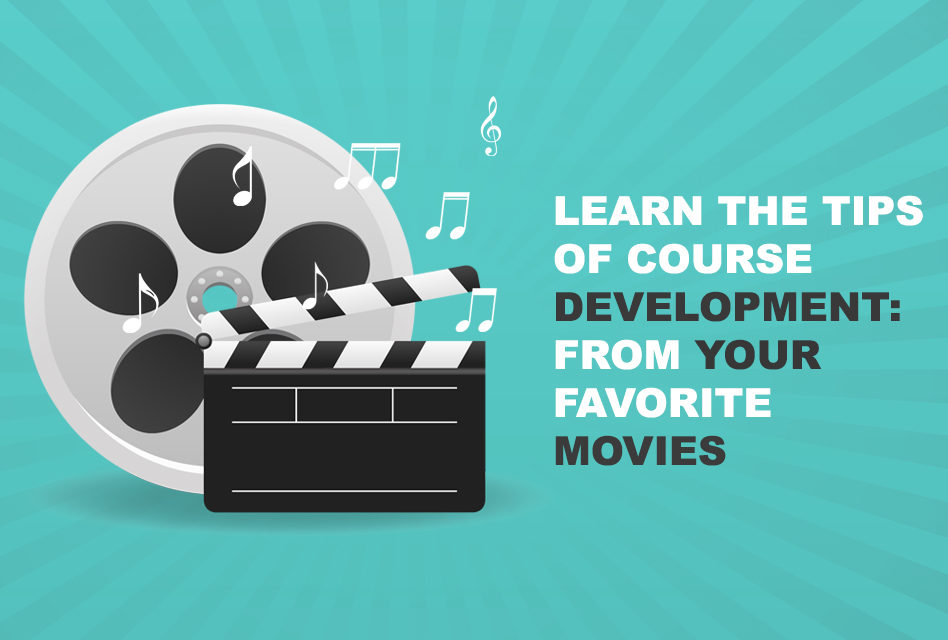This post continues from the Part One post on Movies and E-learning.
Duration
- How it happens in movies: Along with the script’s quality, the duration of a movie also influences the audience experience, significantly. Recall the experience from a movie in which you slept through the movie. You couldn’t keep yourself up, because of the Movie’s pace or length. Several stories fall flat on the Box Office only because of their stretched duration. Their content or message may be great, but it could not hold the audience attention for the duration of the movie.
- How it can happen in e-learning: In e-learning, try to keep the message and content short and crisp – just like a great movie. Deliver only what the audience wants and needs. Ensure that you don’t include any redundant content in the training. In an Instructor-led Training, engage discussions that aid learning and avoid discussions, which are not critical to learning. If you feel that there is optional content that will help the learners and enhance the training value, consider: sharing it as an Appendix, Handout, Job Aid, Email Newsletter, Blog, or Social Media Post – this will align with Gagne’s Provide Guidance Instructional Element.
Flow
- How it happens in movies: Every good movie has a seamless flow developed by the director, writer, and the editor. To ensure that the movie is not patchy and audiences understand what’s the story, the movie makers optimize and streamline the flow of the story.
- How it can happen in e-learning: Flow is the essence of any training. Without proper flow, any training will frustrate the audience, make them ask questions, entail additional discussions, and stretch the course beyond its set schedule. In an instructor-led delivery, the trainer may overcome some challenges. However, in a Web-based e-learning, a course without a flow will not meet its objectives. Course flow is essentially dependent on: course design and structure, content writing, and logical chunking.
Sitting with the Audience
- How it happens in movies: To understand the audience reaction to their work, most directors, writers, or producers either arrange, or attend a screening of their movie. This activity is spread across movie premiers and post-release audience assessment.
- How it can happen in e-learning: Several enterprises ensure that a pilot training is organized, and attended by a sample of the actual target audience, before a course releases. This practice enables the training development teams to assess audience feedback and further align the courses to the learning needs. In case you cannot ensure that the pilot training is organized for every course, try to arrange one for at least high-stake projects. Even an internal session can help you to improve the course quality and alignment with the learning needs.
Inviting the Critic
- How it happens in movies: The Movie Critics are considered to be individuals who do not have any knowledge about practical film making, but critically comment on Movies like know-all experts. Consequently, most movie makers fume at the critics.
- How it can happen in e-learning: Well, things have to be different in e-learning. You should try not to be defensive about your course. Ask a peer to review the course and assess the feedback to determine whether you can implement the changes. When deciding whether to implement the feedback, check if it will help you to: improve the course quality within the agreed scope and timeline.
Have a Press Release and Premier
- How it happens in movies: Big-budget movie releases are preceded by well-planned marketing events such as premiers, promotional tours, and press interviews. This helps in increasing the excitement and hype around the movie release. Consequently, if managed well, these events can ensure a quick Return on Investment from the movie.
- How it can happen in e-learning: In many cases, most of the target audience is not even aware that a new training or curriculum has released. Hence, it is important to plan a marketing or adoption campaign that will:
- Make the audience aware about the new course or curriculum
- Guide the learners as they decide which courses they need to attend and in what sequence
- Provide a step-by-step guide to the curriculum adoption and certifications




